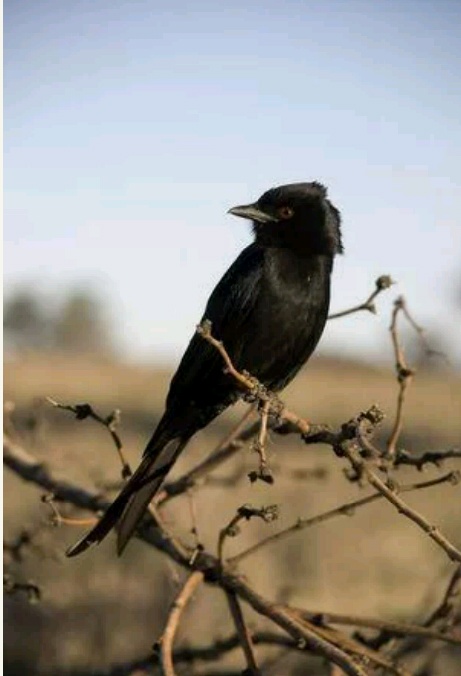By Will Dunham
WASHINGTON (Reuters) – If you believe honesty
is the best policy, you would have a hard time
convincing the forked-tailed drongo. This tricky
African bird is the pathological liar of the animal
kingdom.
Scientists described on Thursday how this
medium-sized bird brazenly deceives other
animals by mimicking alarm calls made by
numerous bird species – and even meerkats – to
warn of an approaching predator in a ruse to
frighten them off and steal food they leave
behind.
The researchers tracked 64 forked-tailed drongos
over a span of nearly 850 hours in the Kalahari
Desert in South Africa close to the Botswana
border to unravel this unique behavior.
“They’re rather demonic little black birds with red
eyes, a hooked beak and a forked tail,” said
evolutionary biologist Tom Flower of the
University of Cape Town in South Africa.
“They’re also highly aggressive and are renowned
for attacking eagles and hawks, for which they
apparently have no fear,” added Flower, whose
study appears in the journal Science.
These birds, common in southern Africa, usually
get meals the honest way, such as capturing
insects in mid-air using their superb aerial skills.
But at other times, like on cold mornings when
few insects are flitting around, the drongos turn
to a life of crime.
FALSE ALARM
The drongos are able to mimic the sounds made
by many different species that inhabit its desert
environment, including birds such as pied
babblers, glossy starlings, sociable weavers and
pale chanting goshawks as well as mammals like
meerkats.
The drongos carry out an elaborate con. They
give their own genuine alarm call when they spot
a predator approaching – essentially behaving as
sentries – and other animals come to trust that
this call signals real danger.
But they sometimes give this alarm call when no
danger exists to fool other animals into fleeing
and abandoning their food.
Then the drongos swoop down for a free lunch.
“All the animals in the Kalahari eavesdrop on each
other’s alarm calls, which provide invaluable
information about potential predators. It’s a bit of
an information superhighway where all the
animals speak each other’s language,” Flower
said.
“Because drongos give reliable predator
information some of the time, it maintains host
responsiveness (of other animals) since they can
never know if the drongo is lying or telling the
truth,” added Amanda Ridley, an evolutionary
biologist at the University of Western Australia,
another of the researchers.
The scientists noticed that sometimes the other
animals “get wise” to the con and ignore repeated
false alarm calls. But then the wily drongos
simply grab another tool from their toolbox of
trickery – they mimic the alarm calls made by
other animals, once again conning them into
fleeing and leaving their chow behind.
Flower observed drongos mimicking more than 50
calls.
When stealing food from other animals, drongos
are able to eat larger prey than they normally
would be able to capture on their own like
scorpions, beetle larvae and even geckos.
“Crime pays,” Flower said, noting that the stolen
stuff accounted for about a quarter of the food
eaten by the drongos.
“One could argue that the strategy of the drongo
to steal food from others seems very dishonorable
in human standards. But, yes, if it has found such
a crafty way to catch food, which is usually much
larger than the food items it catches itself, then
we cannot help but admire this clever little bird’s
adaptiveness,” Ridley added.
The researchers classify the drongo as “a
kleptoparasite.”
There are many examples of mimicry and
deception in the animal kingdom. About 20
percent of song birds mimic the calls of other
birds, Flower noted.
“However, drongos are the only ones to flexibly
produce the specific signals that best deceive
their different hosts and to maintain their
deception racket by changing signal when the
previous signal failed,” Flower added.
(Reporting by Will Dunham, editing by G Crosse)
Source: Yahoo
Posted from WordPress for Android





